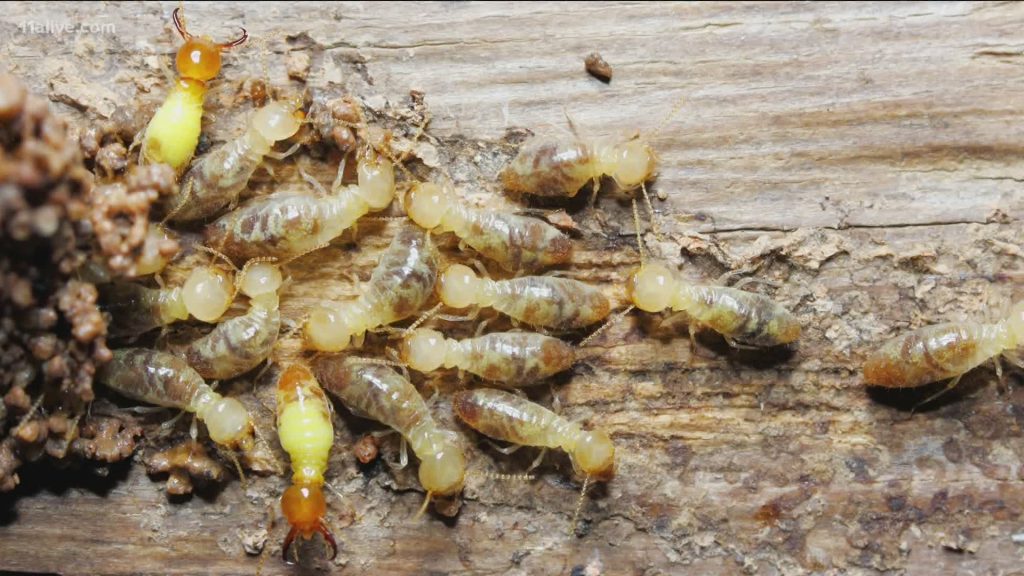Termites are a common and destructive pest found throughout the world. They are a major cause of damage to wooden structures, including homes, buildings, and furniture. But what many people don’t know is that termites actually play an important role in nature, and their eating of wood is not always a bad thing. In this article, we’ll uncover the truth about termites and their eating habits.
Types of Termites
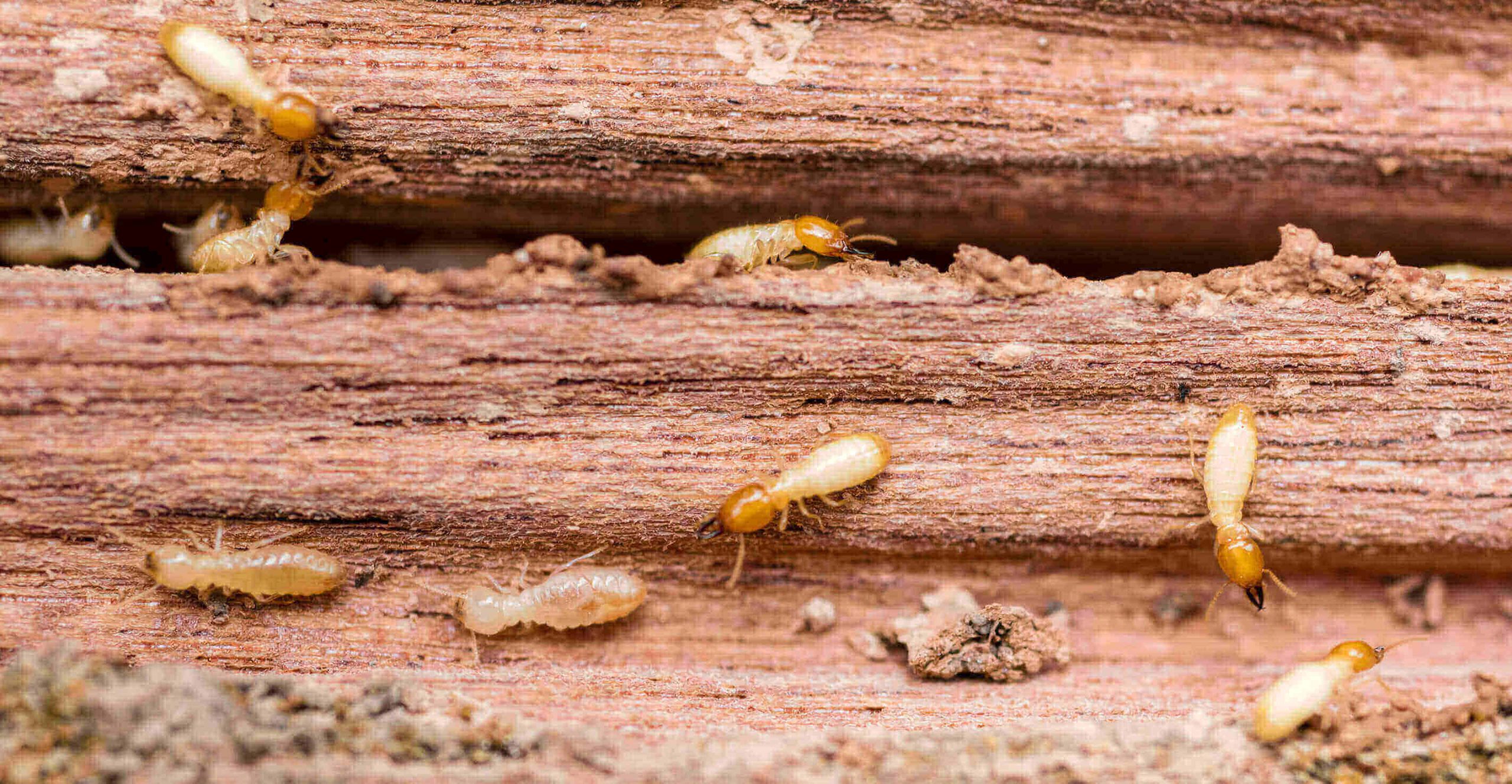
Termites are divided into three different groups, each with their own eating habits and behaviors. Drywood termites are the largest group and are found in warmer climates, where they consume wood and wood products. Subterranean termites are the most common in the United States and build large colonies underground to access wood and other cellulose-based materials. Formosan termites, an invasive species, are found in many areas of the country, including the South and the Gulf Coast and are known to cause significant damage to buildings and other structures.
Signs of Termites Eating Wood
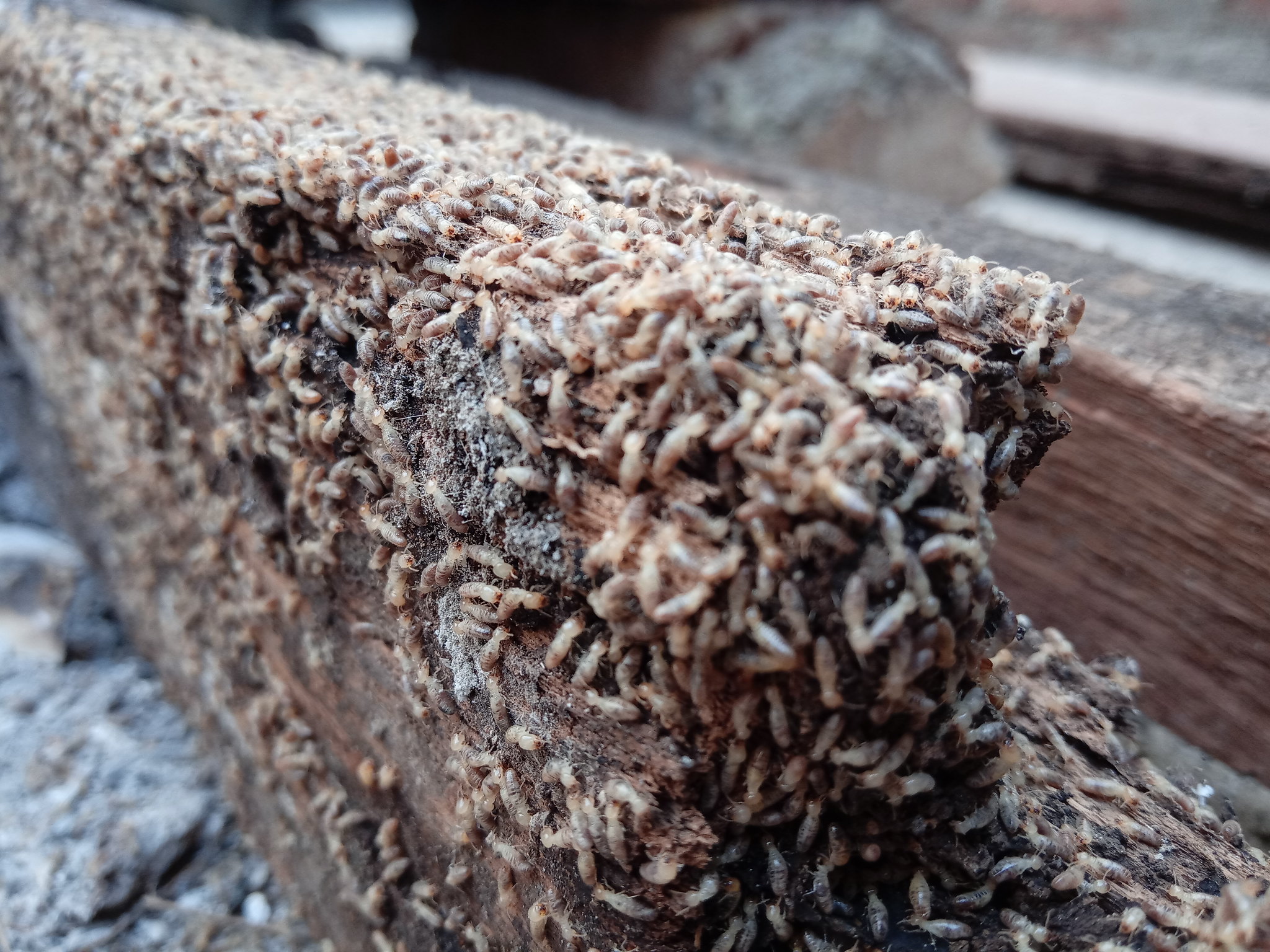
Termites are small but destructive pests that feed on wood. To identify a termite infestation, it is important to look for the signs of their presence. There are several telltale signs of termites eating wood which include the presence of mud tubes, wood that sounds hollow when tapped, and the accumulation of wings from reproductive termites.
Mud tubes, also known as shelter tubes, are the most common sign of termites eating wood. These tubes are made of soil and saliva and connect the ground with wood sources. They are used by termites to travel between the ground and the wood they are consuming.
Another sign of termites eating wood is wood that sounds hollow when tapped. Termites feed on the inside of the wood, leaving the outer layer intact. This causes the wood to sound hollow when tapped.
Reproductive termites, or swarmers, leave behind wings as they fly away to find mates. These wings are usually found near windowsills or door frames, as they are attracted to light.
If any of these signs are present, it is important to contact a pest control professional to inspect the area and remove the termites. Left untreated, a termite infestation can cause significant damage to a home.
Causes of Termites Eating Wood
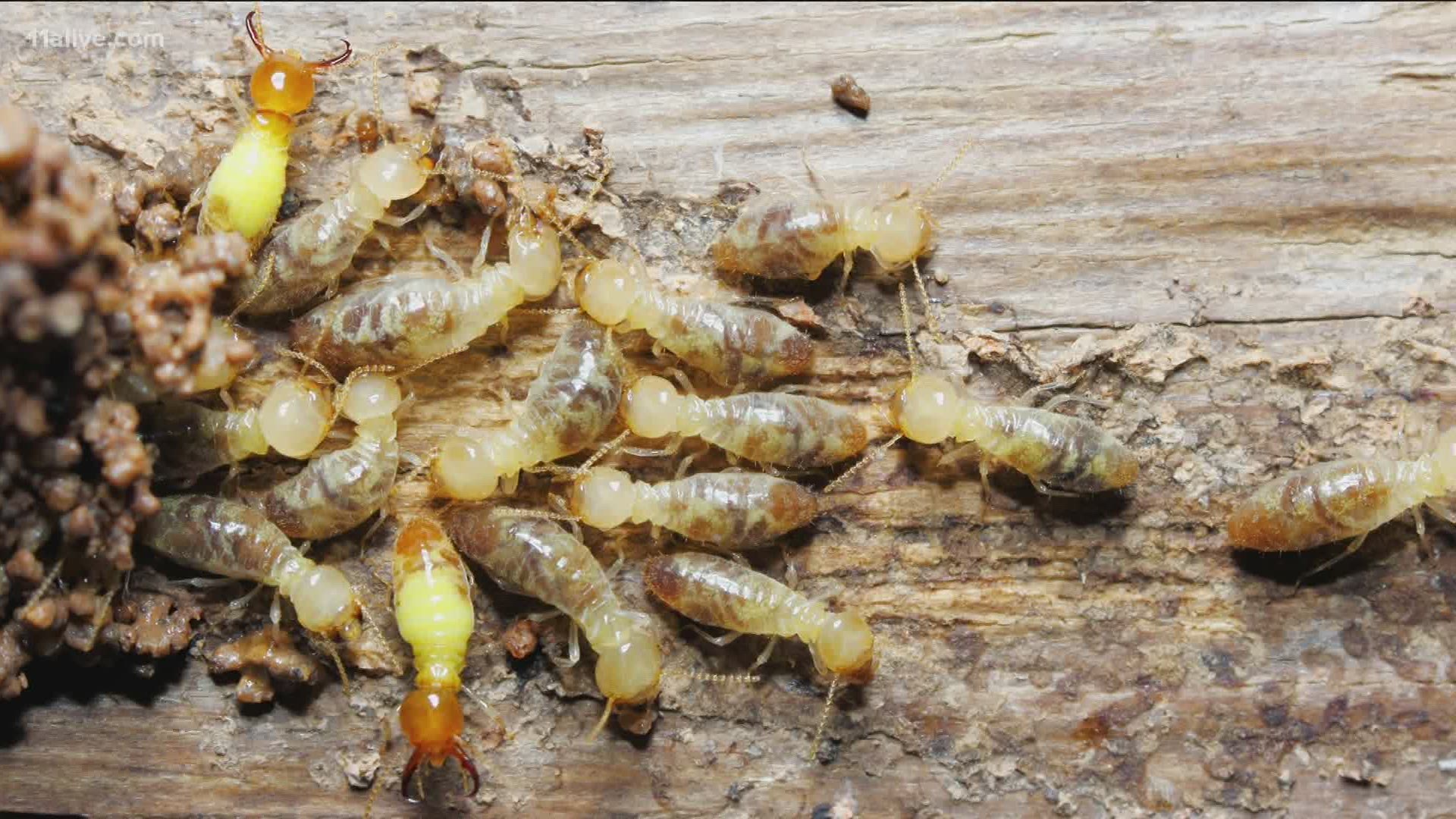
- Moisture and warmth in the environment: Termites require moisture and warmth to survive, and these conditions can be found in damp wood which is why they are attracted to it.
- Availability of food: Wood is an abundant source of food for termites, containing cellulose, lignin and other organic materials.
- Accessibility to wood: Termites can easily access wood through cracks, holes, and other tiny openings.
- Protection from predators: Wood provides a safe shelter for termites, protecting them from predators.
- Presence of termite colonies: If a termite colony is present, they will be attracted to wood, since it is a great source of food and shelter.
Prevention of Termites Eating Wood

| Prevention Method | Description |
|---|---|
| Remove Wood Debris | Remove wood debris such as stumps and logs from the yard. Also clear away any wood mulch, which can provide termites with a food source. |
| Treat Wood with Insecticide | Treating wood with insecticides can help prevent termites from eating it. This is especially effective for treated lumber used in outdoor structures. An insecticide such as borate can be used to treat the lumber. |
| Create a Barrier | Creating a barrier between the soil and wood can help prevent termites from getting to wood. This can be done by using a physical barrier such as metal flashing, or a chemical barrier such as borate-treated foam. |
| Check for Signs of Infestation | Regularly check for signs of infestation such as mud tubes, wood dust, and damaged wood. If an infestation is found, take steps to eradicate the termites immediately. |
| Remove Moisture | Termites need moisture to survive, so reducing moisture levels can help prevent infestations. Repair leaking pipes and gutters, and make sure soil around the house is kept dry. |
Control of Termites Eating Wood
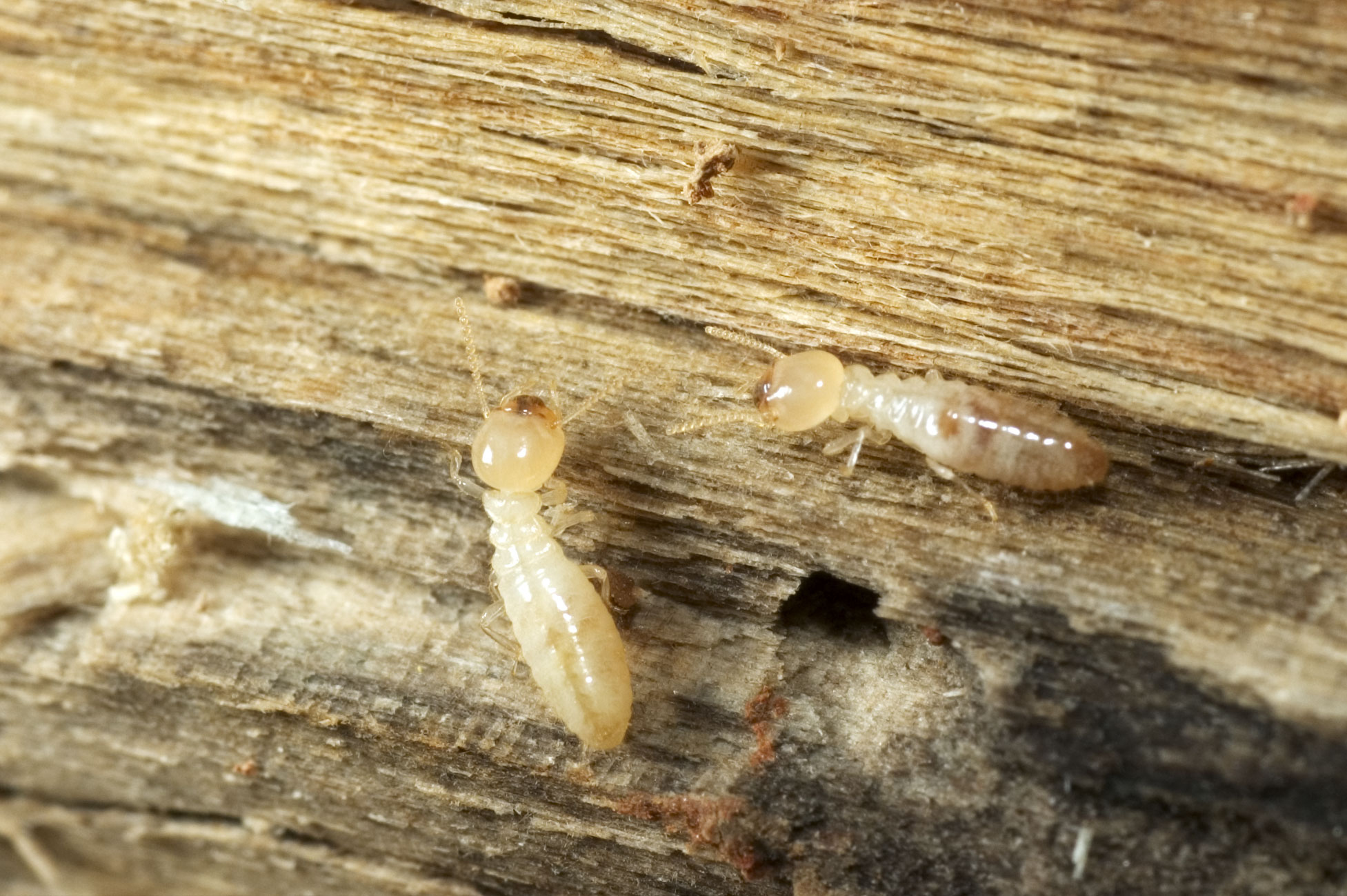
- Inspect wood for signs of infestation such as mud tubes, wood shavings, wings, and sawdust.
- Remove wood from soil contact.
- Replace or treat any damaged or infested wood.
- Install a chemical barrier in the soil to prevent termites from getting to the wood.
- Replace wood with materials such as plastic or metal.
- Use a termite bait system to kill existing colonies.
- Keep wood dry and store it away from the ground.
- Check the wood for signs of infestation regularly.
Benefits of Termites Eating Wood
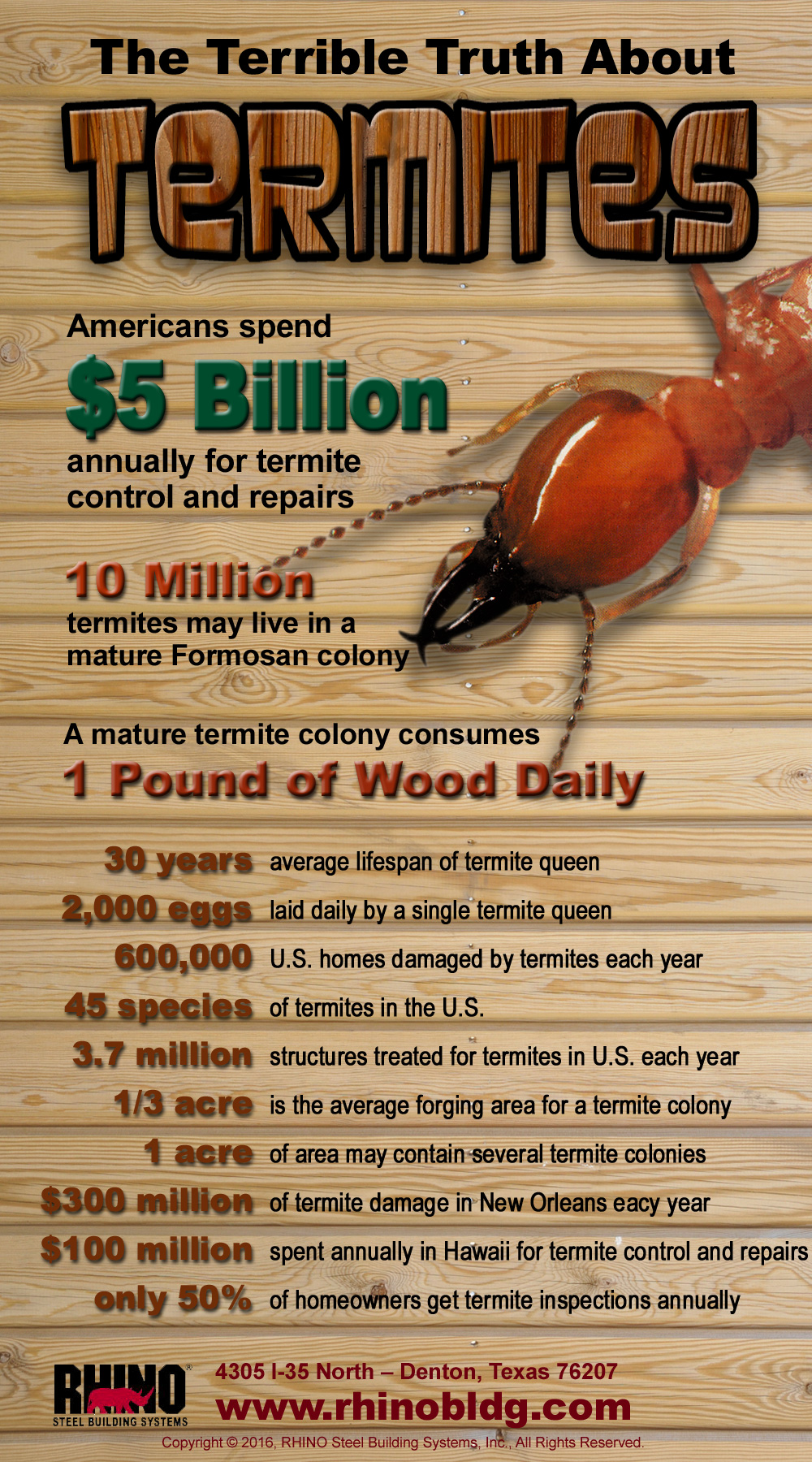
Termites are instrumental in breaking down and recycling dead wood and plant material. By consuming wood, they release nutrients that are beneficial to the soil, improving its fertility and aeration. Furthermore, termites aerate the soil, helping to promote the growth of new plant life. As they burrow and tunnel through the soil, it also helps to improve drainage, allowing water to flow more freely. This can help reduce the risk of flooding and soil erosion. By breaking down dead wood, termites also help create a habitat for a variety of species, many of which are beneficial to the environment.
Damage of Termites Eating Wood
- Structural Damage: Termites can cause severe structural damage to any wooden structure over time. This includes furniture, walls, floors, and even foundations.
- Cosmetic Damage: Termites can also cause cosmetic damage to wood, such as staining or discoloration.
- Rotting: Termites can cause wood to rot, which can lead to further structural damage and can attract other pests.
- Health Issues: Termites can also cause health problems, as the droppings they leave behind can contain allergens and bacteria.
Cost of Treating Termites Eating Wood
| Treatment Type | Cost |
|---|---|
| Chemical Treatment | $200 – $500 |
| Heat Treatment | $2,000 – $4,000 |
| Freezing Treatment | $2,000 – $4,000 |
| Fumigation | $2,000 – $4,000 |
| Electric Treatment | $2,000 – $4,000 |
The cost of treating termites eating wood depends on the type of treatment used. Chemical treatments are usually the cheapest, costing between $200 and $500. Heat treatments, freezing treatments, fumigation, and electric treatments all cost between $2,000 and $4,000. The cost of treatment also varies depending on the size of the affected area.
Frequently Asked Questions
How do termites eat wood?
Termites eat wood by using their strong mandibles to break down cellulose, which is the main component of wood. They also secrete enzymes to break down the cellulose into smaller molecules, which they can then ingest. Termites typically prefer moist, decaying wood for their food source, but can also damage hardwood floors, wooden structures, and furniture.
Are all types of termites known to eat wood?
Yes, all types of termites are known to feed on wood and other cellulose-based materials such as paper, cardboard and fabrics. Termites are social insects that live in colonies, and they use their mandibles to break down wood particles into a form that can be consumed by the colony. In some cases, termites will even consume non-cellulose materials such as plastic and rubber. Termites are a major pest that cause billions of dollars in damage to structures each year.
How Much Wood Can a Termite Consume in a Day?
Termites are voracious eaters and can consume up to a pound of wood a day. As they feed, they create tunnels and galleries in the wood, which often go undetected until the damage is extensive. They also consume other materials, such as paper, books, insulation, and even some types of plastic.
What other materials do termites eat besides wood?
Termites are known to feed on a variety of materials. In addition to wood, they will also feed on paper, insulation, plastic, drywall, carpet, fabric and even swimming pool liners. They may even feed on dead plant and animal matter such as leaves, grass, and dead insects. Termites are also known to feed on certain types of soil.
Are there any ways to prevent termites from eating wood?
Termites can cause extensive damage to wooden structures and can be difficult to detect and treat. Fortunately, there are several ways to help protect wood from termites. These include using pressure-treated wood, avoiding wood-soil contact, maintaining adequate ventilation, and sealing cracks and crevices. Additionally, using baits and barriers, as well as chemical treatments, can help keep termites away from wooden structures.
Conclusion
Termites are a serious destructive pest of wood. They are able to cause extensive damage to a structure, costing homeowners thousands of dollars in repairs. As such, it is important to have an understanding of the termite species and their behavior in order to properly protect a structure from infestations. While termites can be a major problem, they are, in most cases, preventable. By taking the necessary steps to protect a structure from termites, homeowners can reduce the chances of a costly infestation.

